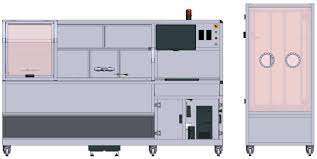1. Introduction to Table Stability Testing
In the world of furniture design, ensuring the stability of tables is of paramount importance. Table stability not only impacts user safety but also determines the overall quality and durability of the furniture. One of the most recognized methods for evaluating table stability is the ISO 7172 test. This standardized procedure provides valuable insights into a table’s performance under various conditions. Let’s delve into the details of this crucial evaluation process.
2. Understanding the ISO 7172 Standard
ISO 7172 is an internationally recognized standard that specifies the method for determining the stability of tables. The test involves applying forces to the table in different directions to simulate real-life scenarios, such as accidental impacts or leaning forces. By conducting this test, manufacturers can identify potential weaknesses and design flaws in their tables.
3. Preparing for the Stability Test
Before conducting the ISO 7172 stability test, several preparatory steps are necessary. These include:
– Selecting the Test Sample:
Choose a representative table sample that closely reflects the design and construction of the entire product line.
– Test Setup:
Create a controlled environment where the test can be conducted safely and without interference.
– Test Equipment:
Ensure that the testing equipment, including force applicators and measuring devices, complies with ISO 7172 requirements.
4. Performing the ISO 7172 Stability Test
The stability test involves subjecting the table to various forces and evaluating its response. Here’s a step-by-step breakdown of the process:
– Vertical Force Test:
Apply a vertically downward force to the center of the table surface and assess its stability under this load.
– Horizontal Force Test:
Apply a horizontal force to the edge of the table, simulating a lateral impact, and evaluate its stability.
– Diagonal Force Test:
Apply a diagonal force to the table’s corner to assess its stability and resistance to tipping.
– Stability during Dynamic Loading:
Subject the table to repetitive impacts to determine its ability to withstand continuous usage.
5. Interpreting Test Results
Once the stability test is completed, it’s crucial to interpret the results accurately. Manufacturers should analyze any structural weaknesses, excessive deflection, or instability issues observed during the test. This analysis allows them to make informed decisions to enhance the table’s design and improve overall stability.
6. Importance of Table Stability in Furniture Design
Table stability directly affects user safety and satisfaction. A stable table reduces the risk of accidental tipping, especially in homes with children or pets. Additionally, tables that pass the ISO 7172 stability test tend to have a longer lifespan, leading to increased customer trust and brand reputation.
7. Ensuring Safety Compliance in Furniture Manufacturing
By adhering to ISO 7172 stability standards, furniture manufacturers can ensure their products meet safety regulations and industry requirements. Compliant furniture instills confidence in consumers, making them more likely to choose reliable and stable products.
8. Conclusion
Evaluating table stability through the ISO 7172 test is an essential aspect of furniture design and manufacturing. By following the standardized procedure, manufacturers can identify and address potential stability issues, creating safer and more durable tables. Prioritizing stability not only enhances product quality but also fosters trust and confidence among customers, leading to long-term business success.








